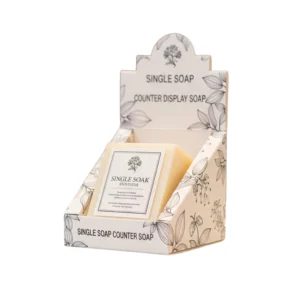
Commercial liability, and insurance-related disputes, few pieces of information carry as much weight as the defendant’s insurance policy limits. This single figure can serve as both a ceiling for potential recovery and a benchmark for strategic decision-making during settlement negotiations. Yet, too often, claimants, attorneys, and even insurers underestimate the value of thorough policy limit research.
Understanding policy limits early in a case allows negotiators to assess realistic settlement ranges, avoid wasted resources on unattainable outcomes, and leverage stronger bargaining positions. This research isn’t simply about finding a number; it’s about interpreting that number in the context of coverage details, exclusions, endorsements, and the defendant’s broader financial situation.
What Are Policy Limits?
Policy limits represent the maximum amount an insurer will pay for a covered claim. They are typically expressed in two figures for liability coverage: a per-claim limit and an aggregate limit. For example, an auto liability policy might carry a $100,000 per-person limit and a $300,000 per-accident limit.
These limits act as a contractual boundary. Once they’re exhausted, any additional liability typically falls on the insured party personally, unless there are excess or umbrella policies in place. For negotiators, this is a critical factor: an insurer will rarely, if ever, pay beyond policy limits without extraordinary circumstances such as bad faith exposure.
Why Policy Limit Research Matters in Negotiations
1. Establishing Realistic Expectations
Negotiations suffer when either side operates on incorrect assumptions about available coverage. If a claimant’s attorney believes there is $1 million in coverage when, in reality, there’s only $100,000, the settlement process can stall or collapse entirely.
Policy limit research sets a foundation for realistic expectations. It helps both sides frame discussions around achievable outcomes, avoiding the frustration and expense of chasing unrealistic demands.
2. Preventing Over- or Under-Valuation of Claims
If a claim’s damages are worth $500,000 but the available coverage is capped at $250,000, understanding this discrepancy early allows the claimant’s attorney to adjust strategy—whether that means negotiating for policy limits quickly, exploring additional defendants, or preparing for potential bad faith claims. Conversely, knowing that coverage exceeds the claim’s value may encourage more thorough damages documentation to justify a higher settlement.
3. Leveraging Settlement Pressure Points
When damages clearly exceed the policy limits and liability appears strong, an insurer may feel pressure to tender the policy limit quickly to avoid bad faith exposure. However, this leverage only works if the plaintiff’s side can prove knowledge of those limits and demonstrate that an early tender opportunity was ignored.
4. Identifying Excess or Umbrella Coverage
Initial policy disclosures might only reveal primary coverage. Without deeper research, negotiators may miss additional layers of coverage from excess or umbrella policies. Discovering these can dramatically expand the settlement potential and shift negotiation dynamics.
How Policy Limit Research Is Conducted
1. Formal Requests and Statutory Demands
Many jurisdictions have statutes or regulations that require insurers to disclose policy limits upon a valid written request. These requests typically need to identify the claim, provide supporting documentation, and cite the applicable legal authority. Attorneys must ensure their requests are properly formatted to avoid delays or incomplete responses.
2. Informal Channels
In some cases, experienced negotiators can obtain policy information through adjuster communications, defense counsel disclosures, or even directly from the insured party. While less formal, these disclosures should still be verified to avoid reliance on inaccurate figures.
3. Litigation Discovery
If a case proceeds to litigation, interrogatories, requests for production, and depositions can uncover policy limits and details about coverage. This route is often slower but may yield more complete documentation, including endorsements and exclusions that can impact settlement discussions.
4. Public Records and Third-Party Data Sources
Certain insurance details can sometimes be uncovered through corporate filings, transportation records, or industry-specific regulatory databases. Professional limit research firms specialize in aggregating such data to supplement formal disclosures.
Timing of Policy Limit Research
Timing is everything. Securing accurate policy limit information early in a case provides more strategic options. For example:
Early stage: If damages clearly exceed policy limits, the claimant may demand a tender before costly litigation begins.
Mid-stage: If coverage is adequate but liability remains contested, knowing limits helps frame realistic offers and counteroffers.
Late stage: Even close to trial, confirming limits may help both sides re-evaluate the risks of proceeding versus settling.
Early research also gives negotiators time to pursue additional defendants or coverage sources if primary policy limits fall short.
Policy Limits in Practice: Negotiation Scenarios
Scenario 1: Clear Liability, Low Limits
A driver runs a red light, causing catastrophic injuries. Policy limit reveals the at-fault driver has $50,000 in liability coverage and no umbrella policy. The claimant’s damages exceed $1 million. The plaintiff’s attorney can immediately demand policy limits in exchange for a release, preserving resources for pursuing other sources of recovery, such as underinsured motorist benefits or third-party liability.
Scenario 2: Disputed Liability, High Limits
A business faces a slip-and-fall claim with alleged damages of $250,000. Limit research shows $2 million in general liability coverage. The defense may feel less pressured to settle quickly, but the plaintiff can negotiate confidently, knowing the insurer can pay if liability is proven.
Scenario 3: Hidden Excess Coverage
A trucking company’s insurer discloses $750,000 in primary coverage. Further research uncovers a $5 million umbrella policy. This revelation dramatically changes the negotiation strategy, as the claimant can justify pursuing a higher settlement aligned with actual coverage availability.
Pitfalls of Incomplete or Inaccurate Research
Failing to conduct thorough Limit research can lead to:
Missed recovery opportunities: Overlooking excess coverage or additional insured provisions.
Wasted litigation costs: Pursuing judgments beyond collectible amounts.
Lost leverage: Missing chances to pressure insurers into early settlements.
Bad faith claim risks: For insurers, withholding accurate limits can create exposure.
Best Practices for Effective Policy Limit Research
Request Early and in Writing – Formal written requests create a paper trail and establish compliance obligations.
Verify Information – Cross-check insurer disclosures with policy declarations, endorsements, and any available public records.
Document All Communications – Detailed records strengthen potential bad faith arguments and prevent disputes over what was disclosed.
Investigate Beyond the Obvious – Look for umbrella policies, additional insured endorsements, and other coverage sources.
Integrate Findings into Case Valuation – Adjust settlement ranges and litigation strategy based on confirmed limits.
The Intersection of Policy Limits and Bad Faith
When damages exceed policy limits and liability is clear, insurers must act in good faith to protect their insureds from personal exposure. If they fail to settle within limits when given the opportunity, they risk bad faith litigation—potentially making them liable for the full judgment, even beyond the policy limits.
Policy research is the foundation of such claims. Without proof that the insurer knew or should have known the limits and the settlement opportunity, a bad faith case becomes much harder to prove.
Conclusion
Policy limit research is more than a procedural step—it is a strategic cornerstone in settlement negotiations. By uncovering, verifying, and interpreting coverage limits early, negotiators can set realistic expectations, avoid costly missteps, and apply pressure where it matters most.
In a legal environment where resources are finite and outcomes often hinge on risk assessment, policy limit empowers attorneys and claimants to make informed decisions, pursue fair settlements, and, when necessary, hold insurers accountable. In short, knowing the limits is knowing the game—and that knowledge can make all the difference between a stalled negotiation and a successful resolution.






